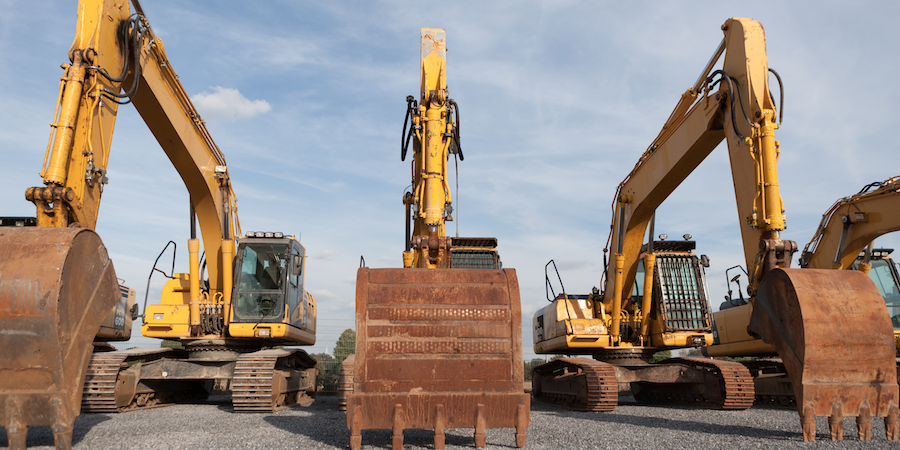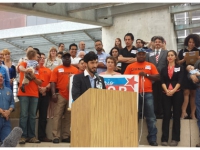The future of the next phase of construction for the proposed headquarters of the Department of Homeland Security in Washington, DC has once again become a political football, according to a recent article in the Washington Post. The project originally proposed after the 9/11 terrorist attacks was intended to consolidate the departments that are now housed in over 50 buildings around the capitol area into one location.
Reshaping the Construction Industry
South, West lead in population growth as cities outpace suburbs; starts rise, MHC saysEditor’s note: Construction Citizen is proud to partner with AGC America to bring you AGC Chief Economist Ken Simonson's Data DIGest. Check back each week to get Ken's expert analysis of what's happening in our industry.“The South and West dominated the list of fastest-growing municipalities between 2012 and 2013, claiming all of the top 15, seven of which were in Texas,” the Census Bureau reported last Thursday. “San Marcos, Cedar Park and Georgetown—each near Austin—ranked among the 10 fastest-growing cities with populations of 50,000 or more during the year ending July 1, 2013. San Marcos was number one in percent growth [8.0%] for the second consecutive year, with Austin itself gaining more people (nearly 21,000) than any [other] city with fewer than 1 million residents.” Population growth is a major driver of residential construction and contributes to demand for many other types, particularly if growth occurs in new areas or outer parts of metro areas. The Wall Street Journal reported last Thursday, “just 18 of America’s 51 metropolitan areas with more than 1 million people had cities growing faster than their suburbs last year, down from 25 in 2012, according to an analysis of census data by William H. Frey,
May 27, 2014
Memorial Day prompts reflection and appropriately so. We must never forget all of those who gave their lives for our freedom, whether in the two World Wars, Korea, Vietnam, the Gulf or in the fighting that continues today. To paraphrase, Winston Churchill, “Never has so much been owed by so many to so few.”This day also prompts homage to those who returned, those heroes who then turned their talents and patriotism to making this country the great nation that it is. One group that deserves our continuous study and emulation is the veterans of World War II, that special group of men and women heralded in Tom Brokaw’s marvelous book, The Greatest Generation. Brokaw wrote this book as a tribute to his father and his buddies, all World War II vets. It is a compelling story, which every American can benefit from reading. He eloquently conveys how this group came back, and although they were owed so much, they never wanted to do anything but continue to serve and give in their companies, their communities and their country. The leaders, both officers and enlisted, went on to start and head companies, to build America into a great industrial economy, while at the same time ensuring that the men and women who had served and supported them in wartime had decent jobs in peacetime, jobs that could allow them to feed their families and realize the American Dream.
May 26, 2014
Earlier this spring I attended an open house at the new Performance Verification Center in La Porte, Texas. The Center has been created by ABC Houston and the Construction and Maintenance Education Foundation (CMEF) to provide hands-on evaluation of craft performance skills by certified Performance Evaluators as part of the accreditation process of students and trainees.Glen O’Mary, Director of Education for the ABC/CMEF Performance Verification Center, joined the staff this February, but has been working in the construction and maintenance industry for 14 years, so he knows many of the people associated with this organization. He is excited to be a part of CMEF, which you can hear in the following 3-minute video interview. He says,“We need a trained and competent workforce. Everybody here is willing to get their hands dirty – literally – to support the cause and do this. We are providing a future for families and giving somebody a chance at a life that they may not have had an opportunity to have in the past. Why I am so close to this is it is helping people change their lives – to become something better. That’s why my heart is in it so much.”
May 23, 2014
The Associated General Contractors of America is working through its local chapters to find ways to address the catch-22 of older workers retiring while fewer graduating students are entering the industry. AGC is starting chartered schools to teach interested kids about the construction industry.They have partnered to establish charter schools such as the ACE Leadership High School in Albuquerque, New Mexico; OBC Academy for Architecture, Construction and Engineering in Portland, Oregon; Construction Careers Center in St. Louis, Missouri; and Academy of Career Education in Sparks, Nevada.Recently, AGC economist Ken Simonson spoke to the Denver Chapter of AGC. In pointing out the looming shortages, he pointed to the recently published AGC report Preparing the Next Generation of Skilled Construction Workers: a Workforce Development Plan for the 21st Century. The plan outlines what federal, state and local officials can do to create construction training programs and fill the pipeline for jobs.An article in the Denver Business Journal by Cathy Proctor outlines some key points from the AGC report:
May 22, 2014
381 Companies Engage Thousands of Georgia StudentsCharles Crosby owns his own construction company in Atlanta. Every year he carves out three full days to volunteer for the Construction Education Foundation of Georgia (CEFGA) CareerExpo and SkillsUSA State Championships.He is one of more than 1,000 industry volunteers who make the event happen. This year, he decided to do a little something extra. He reached out to a middle school in his own community – Sandy Springs – and invited them to the event. His extra work paid off. Sandy Springs Charter Middle showed up with a busload of 44 students.
May 21, 2014
Texas’s capital city is economically booming in a way that’s almost unlike any other city in America, largely because of the region's technology industries. Now, it is time for Austin to take the next step to ensure that the high-wage, high-tech economy also supports the creation of quality blue-collar jobs for working families. That’s the argument laid out by Gregorio Casar, one of the “junkyard dogs” at the Workers Defense Project and now a candidate for Austin City Council.
May 20, 2014
39 states, DC add jobs in last 12 months; multifamily starts, permits outrun single-family Editor’s note: Construction Citizen is proud to partner with AGC America to bring you AGC Chief Economist Ken Simonson's Data DIGest. Check back each week to get Ken's expert analysis of what's happening in our industry.Seasonally adjusted construction employment increased in 39 states and the District of Columbia from April 2013 to April 2014, decreased in 10 states, and remained level in Wyoming, an AGC analysis of Bureau of Labor Statistics (BLS) data released Friday showed. The largest percentage gains were in Florida (12%, 43,300 jobs), North Dakota (11%, 3,400) and Nevada (9.4%, 5,400). Florida also led in number of jobs added, followed by California (39,000, 6.2%) and Texas (23,900, 3.9%). New Jersey lost the most construction jobs (-9,300, -6.8%), followed by New Mexico (-2,000, -4.8%), West Virginia (-1,300, -3.7%) and Alabama (-2.2%, -1,800).
May 19, 2014
Yesterday the National September 11 Memorial and Museum was opened with a dedication ceremony at the site where the World Trade Center towers were attacked in 2001. Family members of the victims, survivors, first responders, community members, and elected officials including President Obama gathered to honor those who lost their lives that day.
May 16, 2014
As many of you are aware, Construction Career Collaborative, also known as C3, was founded because several leaders in the commercial construction industry decided to step forward and address the huge problem that exists in our industry of an unsustainable workforce. In other words, more people are leaving the industry than joining it. In fact, the average age of a craft worker entering the industry is 29, and the average age of all craft workers is 47, with many expected to retire in the next several years.One may ask, “How did we get into this mess?” The answer is not a simple one. In fact, it is quite complex. As one construction executive told me recently, “It has many tentacles.” So what are the causes of this complex problem?Misclassification of craft workers as subcontractors, thereby avoiding the payment of Social Security, federal, and state unemployment taxes in an effort to gain a competitive advantage by reducing cost illegally.
May 15, 2014



.jpeg?itok=6uFZXEBH)





.jpeg?itok=4Vi_1nJG)






























